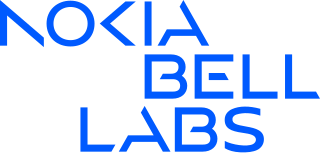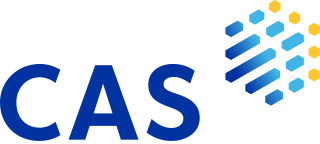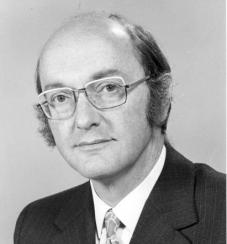Related Research Articles

Nokia Bell Labs, originally named Bell Telephone Laboratories (1925–1984), then AT&T Bell Laboratories (1984–1996) and Bell Labs Innovations (1996–2007), is an American industrial research and scientific development company owned by Finnish company Nokia. It is headquartered in Murray Hill, New Jersey, and operates a global network of laboratories.

Pacific Northwest National Laboratory (PNNL) is one of the United States Department of Energy national laboratories, managed by the Department of Energy's (DOE) Office of Science. The main campus of the laboratory is in Richland, Washington.

Argonne National Laboratory is a federally funded research and development center in Lemont, Illinois, United States. Founded in 1946, the laboratory is owned by the United States Department of Energy and administered by UChicago Argonne LLC of the University of Chicago. The facility is the largest national laboratory in the Midwest.

Chemical Abstracts Service (CAS) is a division of the American Chemical Society. It is a source of chemical information and is located in Columbus, Ohio, United States.

Donald Watts Davies, was a Welsh computer scientist who was employed at the UK National Physical Laboratory (NPL).

TRIUMF is Canada's national particle accelerator centre. It is considered Canada's premier physics laboratory, and consistently regarded as one of the world's leading subatomic physics research centres. Owned and operated by a consortium of universities, it is on the south campus of one of its founding members, the University of British Columbia in Vancouver, British Columbia, Canada. It houses the world's largest normal conducting cyclotron, a source of 520 MeV protons, which was named an IEEE Milestone in 2010. Its accelerator-focused activities involve particle physics, nuclear physics, nuclear medicine, materials science, and detector and accelerator development.

The Open-pool Australian lightwater reactor (OPAL) is a 20 megawatt (MW) swimming pool nuclear research reactor. Officially opened in April 2007, it replaced the High Flux Australian Reactor as Australia's only nuclear reactor, and is located at the Australian Nuclear Science and Technology Organisation (ANSTO) Research Establishment in Lucas Heights, New South Wales, a suburb of Sydney. Both OPAL and its predecessor have been commonly known simply as the Lucas Heights reactor.

Thomas Jefferson National Accelerator Facility (TJNAF), commonly called Jefferson Lab or JLab, is a US Department of Energy National Laboratory located in Newport News, Virginia.

The ISIS Neutron and Muon Source is a pulsed neutron and muon source, established 1984 at the Rutherford Appleton Laboratory of the Science and Technology Facilities Council, on the Harwell Science and Innovation Campus in Oxfordshire, United Kingdom. It uses the techniques of muon spectroscopy and neutron scattering to probe the structure and dynamics of condensed matter on a microscopic scale ranging from the subatomic to the macromolecular.
The UCL Mullard Space Science Laboratory (MSSL) is the United Kingdom's largest university space research group. MSSL is part of the Department of Space and Climate Physics at University College London (UCL), one of the first universities in the world to conduct space research. Since its establishment, MSSL has participated in 35 satellite missions, 10 of which are currently in operation, and in over 200 sounding rocket experiments.
Laboratory informatics is the specialized application of information technology aimed at optimizing and extending laboratory operations. It encompasses data acquisition, instrument interfacing, laboratory networking, data processing, specialized data management systems, a laboratory information management system, scientific data management, and knowledge management. It has become more prevalent with the rise of other "informatics" disciplines such as bioinformatics, cheminformatics and health informatics. Several graduate programs are focused on some form of laboratory informatics, often with a clinical emphasis. A closely related - some consider subsuming - field is laboratory automation.
The School of Engineering and Applied Science (SEAS) at the George Washington University in Washington, D.C. is a technical school which specializes in engineering, technology, communications, and transportation. The school is located on the main campus of the George Washington University and offers both undergraduate and graduate programs.
The Stanford University Network, also known as SUN, SUNet or SU-Net is the campus computer network for Stanford University.

Fourier-transform infrared spectroscopy (FTIR) is a technique used to obtain an infrared spectrum of absorption or emission of a solid, liquid, or gas. An FTIR spectrometer simultaneously collects high-resolution spectral data over a wide spectral range. This confers a significant advantage over a dispersive spectrometer, which measures intensity over a narrow range of wavelengths at a time.

Vernier Software & Technology is an educational software company located in Beaverton, Oregon, that produces technology used for scientific education.
Stephen Brobst is an American technology executive.

Robert Emmet Finnigan was an American pioneer in the development of gas chromatography–mass spectrometry equipment (GC/MS). Finnigan founded the Scientific Instruments Division of Electronic Associates, Inc., producing the first commercial quadrupole mass spectrometer in 1964. He then formed Finnigan Instruments Corporation to combine a computer system with a quadrupole mass spectrometer and gas chromatograph. Finnigan's GC/MS/computer systems are used to detect and identify trace organic compounds, making them important instruments for the monitoring and protection of the environment. They were adopted by the United States Environmental Protection Agency as a standard instrument for monitoring water quality and were fundamental to the work of the EPA.

Gary Glish is an American analytical chemist at the University of North Carolina at Chapel Hill. He is a leading researcher in the fields of mass spectrometry, ion chemistry, and biomolecule analysis.
William J. van Ooij is a retired University of Cincinnati professor known for elucidating the mechanisms of brass-rubber adhesion in tires, and as the founder of corrosion resistant coatings company Ecosil Technologies
References
- ↑ Lose, Eric, "Technology Devised at UC to Receive Governor's Award" University of Cincinnati News, November 12, 2002.
- ↑ Sprague, Estel. "Less Is More: Electronic Data Collection and The Development of the MeasureNet Network at the University of Cincinnati," Using Computers in Chemical Education, Spring, 2003.
- ↑ "Untitled Document". Archived from the original on 2008-05-11. Retrieved 2008-07-10. Ibid.
- ↑ "Archived copy" (PDF). Archived from the original (PDF) on 2008-05-13. Retrieved 2008-07-10.
{{cite web}}: CS1 maint: archived copy as title (link) Streufert, Josh. Undergraduate Labs Undergo Measurable Improvements," J.Chem.Tenn, Fall, 2006: page 5." - ↑ [ permanent dead link ] Southhall, Yaseen. "UC patent income tops region, previous years," The News Record," 9 January 2004.
- ↑ Kennerly, Britt. "MeasureNet Celebrates 10th Birthday in Student Labs Around the World," McMicken College of Arts and Sciences News, 27 February 2008.
- ↑ Northern Kentucky University, Chemistry Department Homepage.
- ↑ Kennerly, inter alia.,.
- ↑ ".:: Universia Puerto Rico - el portal de los universitarios ::". Archived from the original on 2005-09-21. Retrieved 2008-07-10."Tecnología en Química para la Católica," Universia PR, 6 February 2003.
- ↑ "TAFT ANNOUNCES ENERGY EFFICIENCY AWARD WINNERS," Office of the Governor-State of Ohio News Release, 12 November 2002.
- ↑ "Department of Chemistry, McMicken College of Arts & Sciences, University of Cincinnati". Archived from the original on 2008-04-21. Retrieved 2008-07-10."Professor Estel Sprague," Faculty Profile, University of Cincinnati Department of Chemistry, July, 2008.